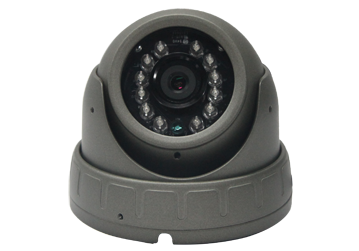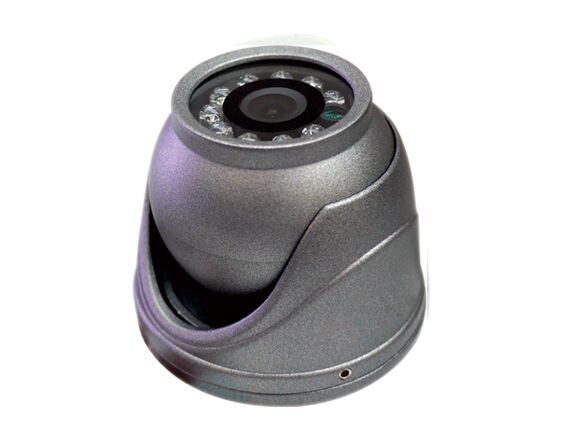The Evolution of Vehicle Safety Technology in Modern Driving
The automotive industry has witnessed remarkable technological advancements in recent years, and among these innovations, the backup camera for car systems has emerged as a game-changing safety feature. As we approach 2025, these devices have evolved from being a luxury add-on to an essential component of modern vehicles. Today's backup cameras offer crystal-clear imaging, intelligent object detection, and seamless integration with other vehicle safety systems.
What was once considered an optional upgrade has now become standard equipment in many countries, including the United States, where federal regulations require all new passenger vehicles to be equipped with backup cameras. This shift reflects the growing recognition of their vital role in preventing accidents and enhancing driver confidence during reverse maneuvers.
Understanding Backup Camera Technology
Core Components and Functionality
A backup camera for car installation typically consists of several key components working in harmony. The system includes a high-resolution camera mounted at the rear of the vehicle, a processing unit that handles image transmission, and a display screen integrated into the dashboard or rearview mirror. Modern systems also incorporate advanced features such as dynamic parking guidelines, wide-angle viewing, and night vision capabilities.
The camera activates automatically when the vehicle is shifted into reverse, providing an immediate view of the area behind the car. This real-time visual feedback eliminates blind spots and allows drivers to navigate tight spaces with greater precision and confidence.
Advanced Features and Capabilities
Today's backup camera systems go far beyond simple visual assistance. Many models include sophisticated features such as object detection algorithms that can identify and alert drivers to potential obstacles, including pedestrians, pets, or other vehicles. Some systems even offer predictive path technology, which displays the vehicle's projected trajectory based on steering input.
High-end backup cameras also incorporate weather-resistant housing, self-cleaning mechanisms, and adaptive brightness controls to ensure optimal performance in various environmental conditions. These features contribute to a more reliable and user-friendly experience, especially during challenging weather conditions or low-light situations.
Safety Benefits and Statistical Impact
Accident Prevention and Risk Reduction
The implementation of backup camera for car safety has shown significant results in reducing reverse-related accidents. Studies conducted by various safety organizations have demonstrated a substantial decrease in backup incidents since the widespread adoption of these systems. The technology has proven particularly effective in preventing accidents involving children, elderly pedestrians, and obstacles that fall below the driver's natural line of sight.
Insurance companies have also recognized the value of backup cameras, with many offering premium discounts for vehicles equipped with these safety features. This acknowledgment reflects the proven track record of backup cameras in minimizing collision risks and associated repair costs.
Enhanced Visibility and Spatial Awareness
One of the most significant advantages of a backup camera system is its ability to provide comprehensive visibility in situations where traditional mirrors fall short. The wide-angle lens captures a broader view of the surrounding area, helping drivers identify potential hazards that might otherwise go unnoticed. This enhanced spatial awareness is particularly beneficial in crowded parking lots, tight urban spaces, and when maneuvering large vehicles.
The technology also helps reduce driver stress and fatigue by eliminating the need for excessive physical movement and awkward positioning while reversing. This improved ergonomic experience contributes to safer and more comfortable driving conditions.

Cost Considerations and Return on Investment
Installation and Maintenance Expenses
When evaluating the worth of a backup camera for car installation, it's essential to consider both initial costs and long-term benefits. While aftermarket systems vary in price depending on features and quality, the investment typically ranges from $100 to $1000, including professional installation. Factory-installed systems, which come integrated with new vehicles, are often bundled with other safety features and may offer better value as part of a comprehensive package.
Maintenance costs for backup cameras are generally minimal, primarily involving occasional cleaning and software updates. The durability of modern systems means they often last throughout the vehicle's lifetime, making them a cost-effective safety investment.
Long-term Value and Insurance Benefits
The financial benefits of installing a backup camera extend beyond accident prevention. Many insurance providers offer reduced premiums for vehicles equipped with safety features, including backup cameras. Over time, these savings can offset the initial installation costs. Additionally, vehicles with backup cameras often command higher resale values, as safety-conscious buyers increasingly view this technology as a must-have feature.
When considering the potential costs of accidents, property damage, and personal injury claims, the investment in a backup camera system becomes even more justified. The prevention of even a single accident can far outweigh the system's initial cost.
Future Developments and Technological Integration
Artificial Intelligence and Machine Learning
The future of backup camera technology looks increasingly sophisticated, with artificial intelligence and machine learning playing pivotal roles. Next-generation systems will feature enhanced object recognition capabilities, predictive analysis of potential hazards, and seamless integration with other advanced driver assistance systems (ADAS). These improvements will further enhance the safety benefits and user experience of backup camera systems.
Manufacturers are also developing systems that can learn from driver behavior and adapt their responses accordingly, creating a more personalized and intuitive backup assistance experience. This evolution in technology continues to make backup cameras an increasingly valuable investment for vehicle owners.
Connectivity and Smart Features
As vehicles become more connected, backup camera systems are evolving to incorporate smart features and internet connectivity. Future systems will likely include cloud-based updates, smartphone integration, and the ability to share data with other vehicles and infrastructure. These advancements will contribute to a more comprehensive safety ecosystem, making backup cameras an even more integral part of modern vehicle technology.
The integration of backup cameras with other vehicle systems, such as parking sensors, 360-degree cameras, and autonomous parking features, will create a more cohesive and effective safety network. This technological convergence represents the next step in the evolution of vehicle safety systems.
Frequently Asked Questions
How effective are backup cameras in preventing accidents?
Backup cameras have been shown to reduce reverse-related accidents by up to 78% according to various safety studies. They are particularly effective in preventing accidents involving children and objects below the driver's direct line of sight.
What is the typical lifespan of a backup camera system?
Most backup camera systems are designed to last the lifetime of the vehicle, typically 8-10 years or more. With proper maintenance and care, these systems can continue functioning effectively for many years, making them a worthwhile long-term investment.
Can backup cameras be installed on older vehicles?
Yes, aftermarket backup camera systems can be installed on virtually any vehicle. Professional installation is recommended to ensure proper functionality and integration with your vehicle's existing systems. Many options are available to suit different vehicle makes and models.
How do weather conditions affect backup camera performance?
Modern backup cameras are designed to perform in various weather conditions, featuring water-resistant housing and self-cleaning mechanisms. While heavy rain or snow may temporarily impact visibility, most systems include features like heated lenses and automatic brightness adjustment to maintain functionality in challenging conditions.


